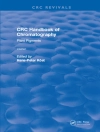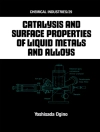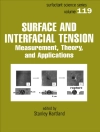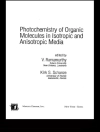The content of this volume has been added to
e Mag Res (formerly Encyclopedia of Magnetic
Resonance) – the href=’http://onlinelibrary.wiley.com/book/10.1002/9780470034590/homepage/rf_coils_virtual_issue.htm?cm=on-chem&cs=chem-analytic&cu=sitename-ln&cd=sitename-In-MRIgroup-VI‘
target=’_blank’>ultimate online resource for NMR and MRI.
The term ‚NMR Crystallography‘ has only recently come into
common usage, and even now causes raised eyebrows within some parts
of the diffraction community. The power of solid-state NMR to give
crystallographic information has considerably increased since the
CPMAS suite of techniques was introduced in 1976. In the first
years of the 21st century, the ability of NMR to provide
information to support and facilitate the analysis of
single-crystal and powder diffraction patterns has become widely
accepted. Indeed, NMR can now be used to refine diffraction results
and, in favorable cases, to solve crystal structures with minimal
(or even no) diffraction data. The increasing ability to relate
chemical shifts (including the tensor components) to the
crystallographic location of relevant atoms in the unit cell via
computational methods has added significantly to the practice of
NMR crystallography. Diffraction experts will increasingly welcome
NMR as an allied technique in their structural analyses. Indeed, it
may be that in the future crystal structures will be determined by
simultaneously fitting diffraction patterns and NMR spectra.
This Handbook is organised into six sections. The first contains
an overview and some articles on fundamental NMR topics, followed
by a section concentrating on chemical shifts, and one on coupling
interactions. The fourth section contains articles describing how
NMR results relate to fundamental crystallography concepts and to
diffraction methods. The fifth section concerns specific aspects of
structure, such as hydrogen bonding. Finally, four articles in the
sixth section give applications of NMR crystallography to
structural biology, organic & pharmaceutical chemistry,
inorganic & materials chemistry, and geochemistry.
About EMR Handbooks / e Mag Res
Handbooks
The Encyclopedia of Magnetic Resonance (up to 2012) and
e Mag Res (from 2013 onward) publish a wide range of online
articles on all aspects of magnetic resonance in physics,
chemistry, biology and medicine. The existence of this large number
of articles, written by experts in various fields, is enabling the
publication of a series of EMR Handbooks / e Mag Res
Handbooks on specific areas of NMR and MRI. The
chapters of each of these handbooks will comprise a carefully
chosen selection of articles from e Mag Res. In consultation
with the e Mag Res Editorial Board, the EMR
Handbooks / e Mag Res Handbooks are coherently
planned in advance by specially-selected Editors, and new articles
are written (together with updates of some already existing
articles) to give appropriate complete coverage. The handbooks are
intended to be of value and interest to research students,
postdoctoral fellows and other researchers learning about the
scientific area in question and undertaking relevant experiments,
whether in academia or industry.
Have the content of this Handbook and the complete content of
e Mag Res at your fingertips!
Visit: href=’http://www.wileyonlinelibrary.com/ref/e Mag Res’>www.wileyonlinelibrary.com/ref/e Mag Res
View other e Mag Res publications href=’http://onlinelibrary.wiley.com/book/10.1002/9780470034590/homepage/emagres_publications.htm‘
target=’_blank’>here
Inhaltsverzeichnis
Contributors.
Series Preface.
Volume Preface.
Part A: Introduction.
1 Crystallography & NMR: an Overview (Robin K.
Harris).
2 Tensors in NMR (S. Chandra Shekar, Alexej
Jerschow).
3 Computation of Magnetic Resonance Parameters for Crystalline
Systems: Principles (Jonathan R. Yates, Chris J.
Pickard).
4 Experimental Characterization of Nuclear Spin Interaction
Tensors (Jeremy J. Titman).
Part B: Chemical Shifts.
5 Magnetic Shielding & Chemical Shifts: Basics (Julio C.
Facelli, Anita M. Orendt).
6 Symmetry Effects at the Local Level (Matthias Bechmann,
Angelika Sebald).
7 Chemical Shift Computations for Crystalline Molecular Systems:
Practice (Robin K. Harris, Paul Hodgkinson, Chris J. Pickard,
Jonathan R. Yates, Vadim Zorin).
8 Chemical Shifts & Solid-state Molecular-level Structure
(Anita M. Orendt, Julio C. Facelli).
9 Chemical Shift Anisotropy & Asymmetry: Relationships to
Crystal Structure (James K. Harper).
Part C: Coupling Interactions.
10 Dipolar & Indirect Coupling: Basics (Roderick E.
Wasylishen).
11 Dipolar Recoupling: Heteronuclear (Christopher P.
Jaroniec).
12 Dipolar Recoupling: Homonuclear (Robert Tycko).
13 Dipolar Coupling: Molecular-level Mobility (Detlef
Reichert, Kay Saalwächter).
14 Spin Diffusion in Crystalline Solids (Lyndon
Emsley).
15 Indirect Coupling & Connectivity (Anne
Lesage).
16 Nuclear Quadrupole Coupling: An Introduction &
Crystallographic Aspects (Sharon E. Ashbrook, Stephen
Wimperis).
Part D: Crystal Structure Determination using NMR.
17 Fundamental Principles of NMR Crystallography (Francis
Taulelle).
18 Interplay between NMR & Single-crystal X-ray Diffraction
(Darren H. Brouwer).
19 Combined Analysis of NMR & Powder Diffraction Data
(Kenneth D.M. Harris, Mingcan Xu).
20 Tensor Interplay (David L. Bryce).
Part E: Properties of the Crystalline State.
21 Intermolecular Interactions & Structural Motifs
(Lindsay S. Cahill, Gillian R. Goward).
22 Hydrogen Bonding in Crystalline Organic Solids (Steven P.
Brown).
23 Inorganic Non-stoichiometric Crystalline Systems & Atomic
Ordering (Mark E. Smith).
24 Rotational & Translational Dynamics (Christopher I.
Ratcliffe).
25 Intramolecular Motion in Crystalline Organic Solids (Paul
Hodgkinson).
26 Structural Phase Transitions (Kenneth R. Jeffrey, Glenn H.
Penner).
Part F: Applications of NMR to Crystalline Solids.
27 Structural Biology (David A. Middleton).
28 Organic & Pharmaceutical Chemistry (Marek J.
Potrzebowski).
29 Inorganic & Materials Chemistry (Ray Dupree).
30 Geochemistry (Brian L. Phillips).
Index.
Über den Autor
Robin Kingsley Harris, Emeritus Professor of Chemistry, University of Durham, UK
Editor-in-Chief of the Encyclopedia of NMR 1st Edition and the Encyclopedia of MR 2nd Edition.
Roderick Wasylishen, Professor, University of Alberta, Edmonton, Alberta, CANADA.
Dr Melinda Duer, Department of Chemistry, University of Cambridge, UK.












